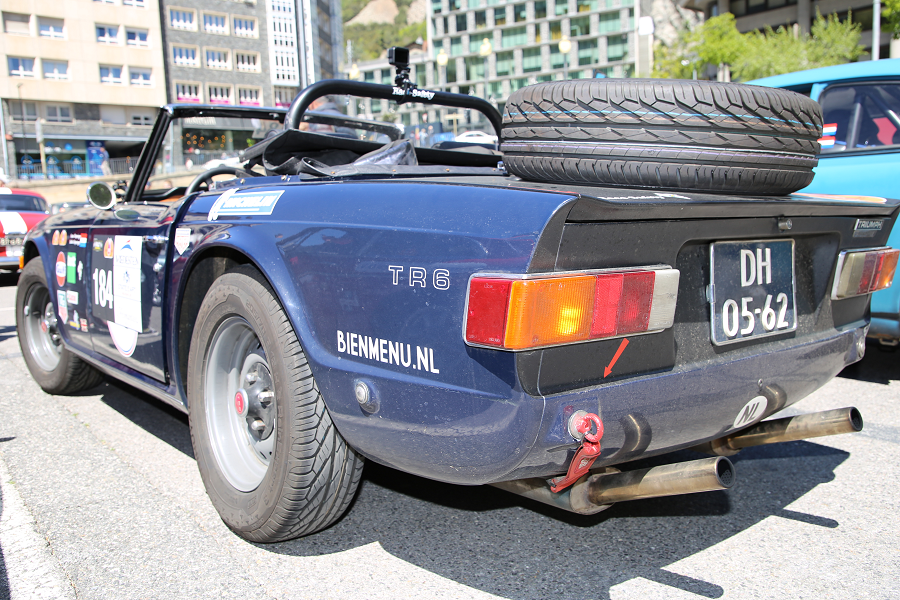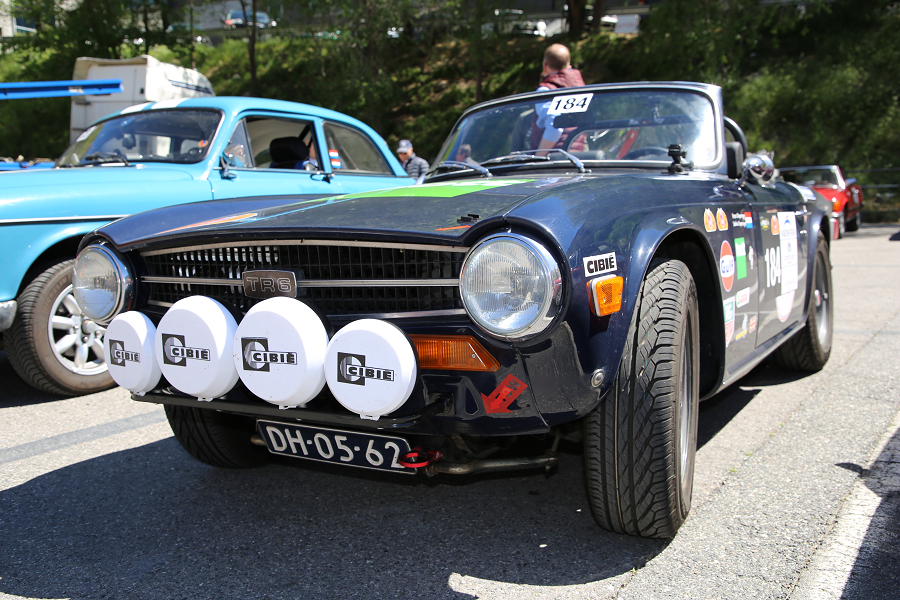Triumph TR6: blue cabriolet
The Triumph TR6 is a sports car that was built by the Triumph Motor Company of England. While production began several months earlier, the TR6 was officially introduced in January as a 1969 model year vehicle. The last TR6 was produced on the 20th of July 1976.
Of the 91,850 TR6s produced, 83,480 were exported, almost all of them to the United States, while only 8,370 were sold in the UK.
Design and features
The styling of the body of the TR6 was done by Karmann of Germany. Triumph Motor Cars had a limited budget for the development of the TR6, and while the TR6 looked drastically different from the previous body style of the TR4/TR4A/TR250/TR5 cars, the same chassis, engines, running gear, doors, windshield, and much of the body tub were taken directly from the TR250/TR5 models. The new removable hardtop for the TR6 was designed in-house by Triumph, and was available as an option.
Construction of the TR6 was traditional body-on-frame with four-wheel independent suspension, front disc brakes and rear drum brakes.
All TR6s were powered by Triumph’s 2.5-litre straight-6 engine.
The TR6 featured a four-speed manual transmission. An electrically switched overdrive made by Laycock de Normanville was available as an option. On early cars the “A-type” model overdrive was used and was able to be activated on second, third, and fourth gears and provided a 22% gear ratio reduction. Later TR6s had a “J-type” model overdrive able to be activated only on third and fourth gears but with a 28% gear ratio reduction.
Other notable features that were shared with the TR250/TR5 included aluminium semi-trailing arm independent rear suspension, rack and pinion steering, pile carpet on floors and trunk/boot, bucket seats, full instrumentation, 15-inch (380 mm) wheels and depending on the market, Michelin asymmetric XAS tyres that dramatically improved the handling. The optional steel hardtop required two people to deploy. The dashboard was a light shade of flat cut walnut veneer over plywood with a thick coating. Overdrives and hardtops were more commonly selected options whereas a rear anti-roll bar and a limited-slip differential were very rarely options.













